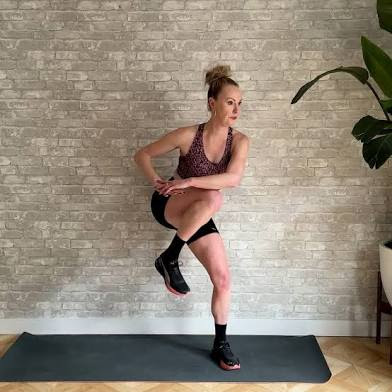What Cardio Exercises Can Replace Running for Those With Knee Issues?
Running is a popular cardiovascular exercise that helps improve endurance, burn calories, and strengthen the heart. However, for individuals with knee pain, arthritis, or previous injuries, the high-impact nature of running can exacerbate discomfort and lead to further damage. Fortunately, there are several effective low-impact cardio alternatives that provide similar benefits without stressing the knees.
In this article, we’ll explore the best cardio exercises to replace running for those with knee issues, along with their benefits and how to perform them safely.
Why Running Can Be Hard on the Knees
Before diving into alternatives, it’s important to understand why running can be problematic for people with knee pain:
- High Impact: Each stride places force equivalent to 2-3 times your body weight on the knees.
- Repetitive Motion: The constant pounding can lead to overuse injuries like patellofemoral pain syndrome (runner’s knee) or IT band syndrome.
- Joint Wear and Tear: Those with arthritis or cartilage damage may experience increased pain after running.
Switching to low-impact cardio can help maintain fitness while protecting knee health.
Best Cardio Exercises to Replace Running
1. Cycling (Outdoor or Stationary Bike)
Why It’s Great: Cycling is a low-impact exercise that strengthens the quadriceps, hamstrings, and glutes while minimizing stress on the knees.
How to Do It:
- Adjust the seat height so your knee is slightly bent at the bottom of the pedal stroke.
- Maintain a moderate resistance to avoid straining the knees.
- Aim for 30-45 minutes at a steady pace or try interval training.
Bonus: Indoor cycling (spin classes) offers a high-intensity workout with minimal joint impact.
2. Swimming
Why It’s Great: Swimming is a zero-impact, full-body workout that improves cardiovascular health without stressing the joints. The water’s buoyancy supports body weight, making it ideal for knee pain sufferers.
How to Do It:
- Freestyle and backstroke are the most knee-friendly strokes.
- Avoid breaststroke if it causes knee discomfort due to the frog-like kick.
- Swim for 20-40 minutes, adjusting intensity based on fitness level.
Bonus: Water aerobics is another excellent option for those who prefer structured workouts.
3. Elliptical Trainer
Why It’s Great: The elliptical mimics running motion without the impact, making it a perfect substitute. It engages both the upper and lower body while keeping the knees in a stable, low-stress position.
How to Do It:
- Keep an upright posture and avoid leaning forward.
- Use the moving handles for a full-body workout.
- Adjust resistance and incline for variation.
Bonus: Some ellipticals offer reverse motion, which can reduce knee strain further.
4. Rowing (Machine or On Water)
Why It’s Great: Rowing is a fantastic cardio and strength-building exercise that works the legs, core, and upper body with minimal knee impact.
How to Do It:
- Focus on proper form: Push through the legs first, then lean back slightly, and pull the handle toward your ribs.
- Avoid hunching your back.
- Start with 10-20 minutes and gradually increase duration.
Bonus: Rowing improves posture and strengthens the back muscles.
5. Walking (Especially on Soft Surfaces)
Why It’s Great: While walking is technically low-impact, it can still be hard on the knees if done excessively on hard surfaces. Opting for grass, trails, or a treadmill with cushioning can reduce impact.
How to Do It:
- Wear supportive shoes with good arch support.
- Use walking poles (Nordic walking) to engage the upper body and reduce knee load.
- Aim for brisk 30-60 minute walks.
Bonus: Walking uphill increases intensity without added knee stress.
6. Stair Climbing (Modified)
Why It’s Great: While traditional stair climbing can be tough on the knees, using a step machine with controlled movements can provide a great cardio workout.
How to Do It:
- Use a stair climber machine with adjustable resistance.
- Take smaller steps to reduce knee bend.
- Avoid locking the knees at the top of each step.
Bonus: Climbing stairs strengthens the glutes, which support knee stability.
7. Low-Impact Aerobics or Dance
Why It’s Great: Low-impact aerobics and dance workouts (like Zumba or barre) keep the heart rate up without jumping or jarring movements.
How to Do It:
- Follow online videos or join a class.
- Modify high-impact moves (e.g., step touches instead of jumps).
- Focus on smooth, controlled movements.
Bonus: Dance workouts improve coordination and mood.
8. HIIT (Low-Impact Modifications)
Why It’s Great: High-Intensity Interval Training (HIIT) burns calories efficiently, and low-impact versions can be just as effective.
Sample Low-Impact HIIT Routine:
- 30 sec: March in place (high knees without jumping)
- 30 sec: Standing oblique crunches
- 30 sec: Glute bridges
- 30 sec: Seated leg lifts
- Repeat for 15-20 minutes
Bonus: HIIT improves cardiovascular fitness in less time than steady-state cardio.
Tips for Protecting Your Knees During Cardio
1. Warm Up Properly – Dynamic stretches and light movement prep the joints.
2. Strengthen Supporting Muscles – Strong quads, hamstrings, and glutes stabilize the knees.
3. Wear Supportive Footwear – Cushioned shoes reduce impact.
4. Listen to Your Body – Stop if you feel sharp pain (not just muscle fatigue).
5. Cross-Train – Rotate between different cardio exercises to avoid overuse.
Final Thoughts
Knee issues don’t mean you have to give up cardio. By choosing low-impact alternatives like cycling, swimming, elliptical training, or rowing, you can maintain cardiovascular fitness while protecting your joints. Experiment with different exercises to find what works best for your body, and always prioritize proper form to prevent further injury.
With these alternatives, you can stay active, healthy, and pain-free—without running!
#Running #cardio #exercise #Knee #Kneeinjuries #health






